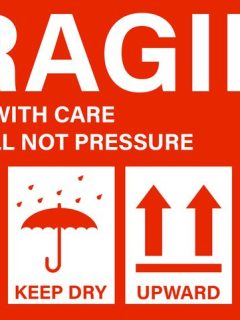Last-mile logistics is a term that is gaining prominence with the growth of e-commerce and increasing consumer expectations for fast delivery. The process of getting a product from the local distribution centre to the customer’s doorstep is a crucial but also the most costly and complex step in the entire supply chain. Particularly in large cities, where infrastructure, traffic and population density pose additional challenges, efficient management of last-mile logistics becomes a priority. Let’s take a closer look at what last-mile logistics is and what its key challenges are.
What is last mile logistics?
Last mile logistics refers to the final stage of the process of delivering goods from the point of distribution to the final recipient, i.e. the end customer. This stage is crucial for customer satisfaction, as it directly influences their purchasing experience. No matter how smoothly the earlier logistical stages are, delays or problems in the last mile delivery can undermine all the effort put into the logistics process.
Last-mile logistics encompasses various forms of delivery, such as courier delivery, cycling, walking or even drone delivery. In cities, where traffic congestion and limited space pose additional challenges, finding an efficient and cost-effective solution becomes crucial. What could be helpful?
Challenges in last-mile logistics
What are the main challenges of last-mile logistics?
Delivery costs
Last mile delivery costs are one of the biggest challenges for logistics companies. It is estimated that this stage accounts for up to 53% of total transport costs in the supply chain. Why is this the case?
- Individual deliveries – in large cities, shipments often need to be delivered to many different locations, which increases the cost of fuel, vehicle operation and driver time.
- Parking problems – finding a place to park in congested urban areas can be difficult and time-consuming, which adds to operational costs.
- Returns and complaints – the high number of returns, especially in e-commerce, generates additional costs for transporting and handling returned goods. Returns logistics can therefore be challenging.
Delivery time
Delivery time is a key factor in customer satisfaction. In cities, where traffic jams and congestion are the order of the day, it becomes a challenge to deliver a parcel within a certain time. Customers increasingly expect fast deliveries, often on the same day. How can we meet this challenge?
- Optimise routes – use advanced algorithms to plan delivery routes to minimise time spent in traffic jams.
- Increasing the number of distribution points – deploying more local warehouses and distribution points to shorten the distance between them and customers.
Check: The right belt for your logistics chain
Route management
Effective management of delivery routes is key to minimising costs and delivery times. In cities, this challenge is even more complex. What influences it?
- Dynamic road conditions –traffic jams, roadworks and other obstructions require flexibility and the ability to react quickly to changes.
- Variety of vehicles – the use of different types of vehicles, such as cars, bicycles and scooters, requires a variety of route planning strategies.
- GPS and IoT technologies – the use of modern technology to monitor and optimise routes in real time, allowing plans to be adapted in real time to the current traffic situation.
Ecology
Environmental awareness among consumers is growing, forcing companies to seek more sustainable logistics solutions. In cities, where air pollution is a serious problem, it is important to take care of sustainability. So what can logistics companies do in this field?
- Use of electric vehicles – switching to electric vehicles reduces CO2 emissions and noise in urban areas.
- Cycling and walking deliveries – running deliveries by couriers on bicycles or onfoot , especially over short distances.
- Consolidation of shipments – reducing the number of journeys by consolidating deliveries to one recipient or several recipients close to each other.
Summary
Last mile logistics in large cities is a complex process with many challenges. Managing costs, delivery times, routes and moving towards greener solutions are key aspects that companies need to consider in order to meet growing customer expectations and minimise environmental impact. Managing these challenges effectively can contribute to increased competitiveness and improved customer satisfaction.














